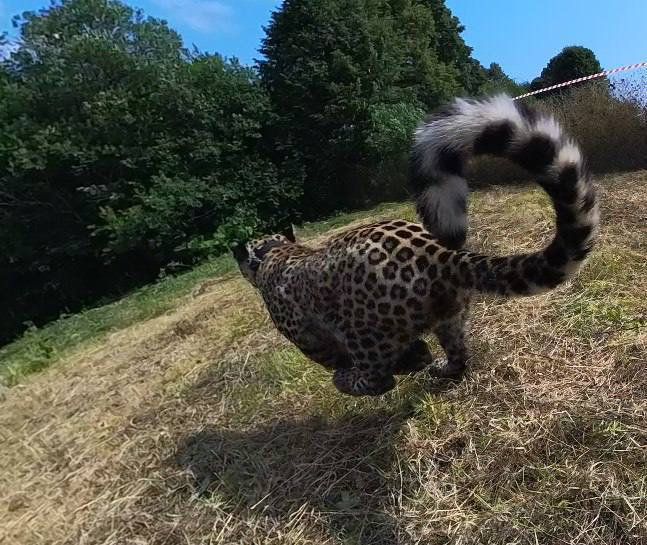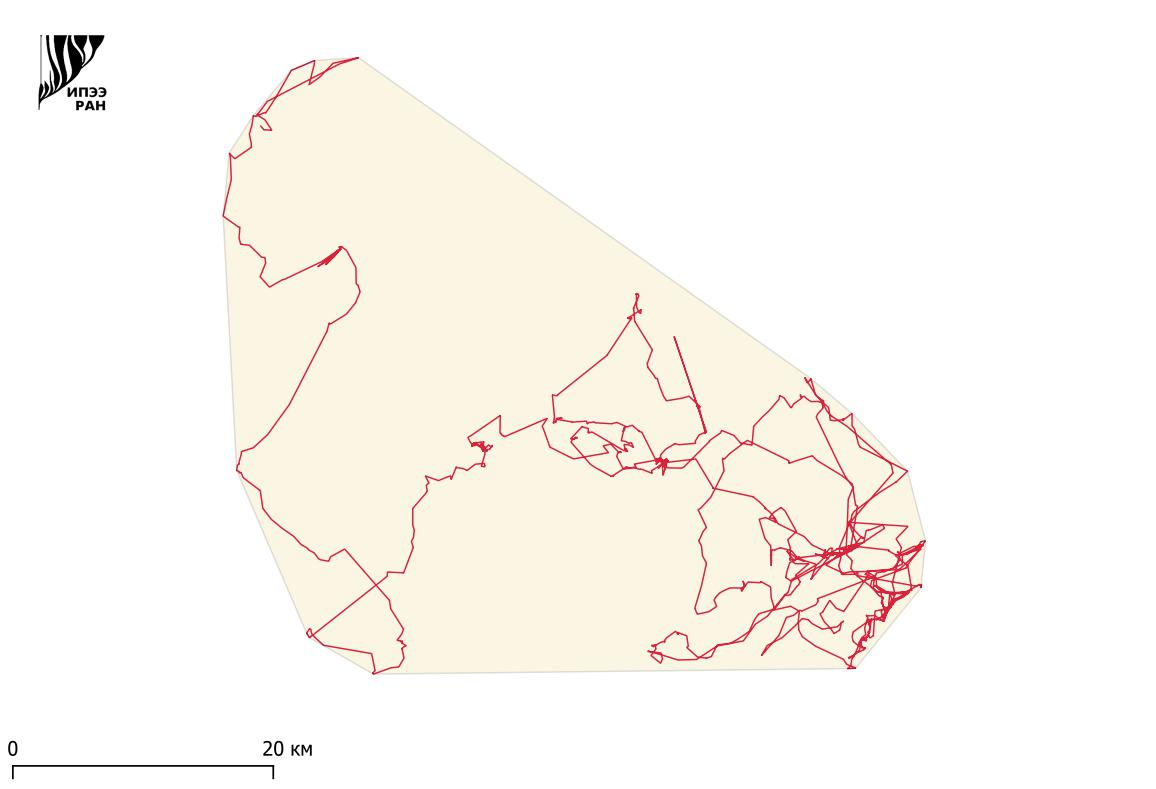
A Central Asian leopard named Chilmas, released in July 2023 in North Ossetia, made its first foray into neighboring Kabardino-Balkaria at the beginning of winter. He passed through the highlands of the Alania National Park, at an altitude of about 3,700 m above sea level, not far from the site of the first release of leopards in Ossetia in the summer of 2018. This is the southernmost crossing of released leopards from Ossetia to Kabardino-Balkaria. All our other cats who visited the Kabardino-Balkarian Republic earlier (namely, Leo, Laura and Volna) made similar transitions much further north, where human presence was more pronounced and probable, but the territory itself was less risky in terms of topography. While Chilmas was mastering the highlands, he did not show up on our radars for two weeks, which caused us noticeable concern, especially against the backdrop of recent reports regarding Leo. We are very glad that he safely overcame the winter slopes and, hopefully, enjoyed the magnificent views of the snow-capped Caucasian peaks.
Chilmas hunted twice during December, but clusters of his locations in the intended hunting areas are currently inaccessible to our field researchers. We hope that during the period when the situation becomes less dangerous for avalanches, there will be an opportunity to examine them and find out who Chilmas was hunting in the highlands. The latest data on his hunts contain information about his prey of ungulates.
Since November to date, Chilmas has covered an area of about 1,672 km2 during the survey of new habitats, thereby having developed a total area of about 1,726 km2. It should be noted that from the moment of release, Chilmas was very careful and did not make long treks, preferring the forest area of the Ardon-Urukh interfluve, and only in the second part of November began to actively move to the West-South-West.
Over the entire period of his free and independent life, Chilmas traveled a distance of 697 km, of which 143.5 km in December. The maximum distance it has moved from its “starting point” (place of release) is now about 37 km.

Since the release of Chilmas, we have registered 15 clusters of locations - places where he hunted. If you visualize Chilmas's track, you can see that it runs tangentially along the tracks previously marked for Laura and Leo. Thus, he followed the tracks of his relatives, which they had left in Kabardino-Balkaria earlier.
The team studying the processes of restoration of the Central Asian leopard in the Caucasus sincerely congratulates everyone on the upcoming New Year and Christmas!
The program for the restoration of the Central Asian leopard in the Caucasus is being implemented by the Russian Ministry of Natural Resources with the participation of the Sochi National Park, the Caucasus Nature Reserve, the Federal State Budgetary Institution "Reserve Ossetia-Alania", the Moscow Zoo with the assistance of the International Union for Conservation of Nature (IUCN). Scientific support of the Program is provided by the A.N. Severtsov Institute of Ecology and Evolution of the Russian Academy of Sciences (IEE RAS) in collaboration with the A.K. Tembotov Institute of Ecology of Mountain Territories RAS (IEGT RAS), the Caspian Institute of Biological Resources of the Dagestan Federal Research Center of the Russian Academy of Sciences (PIBR DFRC RAS) and zoologists of protected areas. In North Ossetia, financial support for scientific support of the population restoration program is provided by the RusHydro company.
